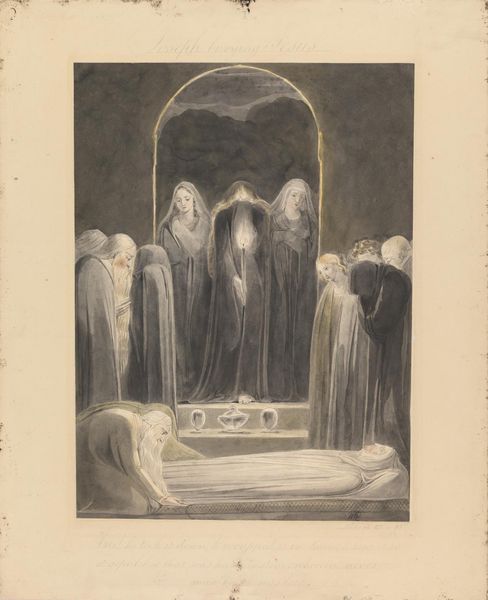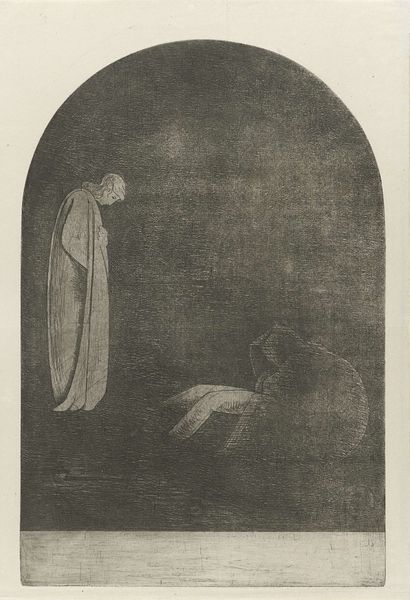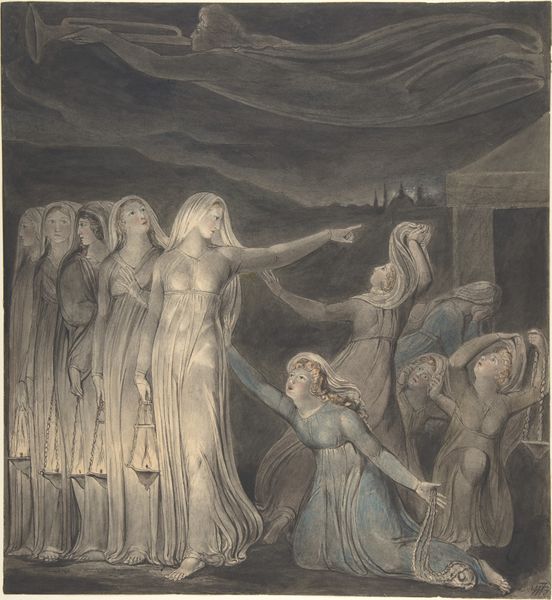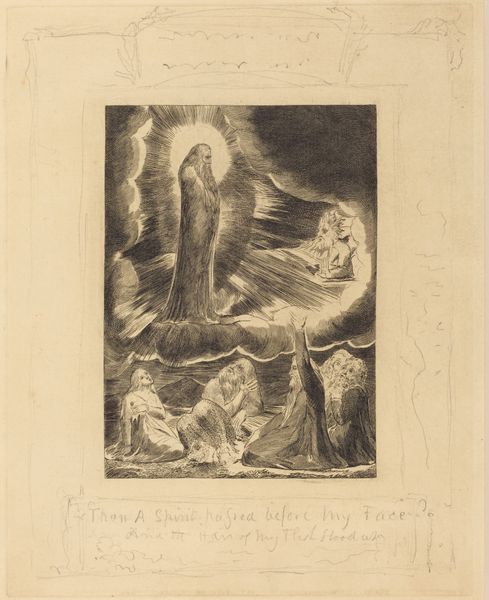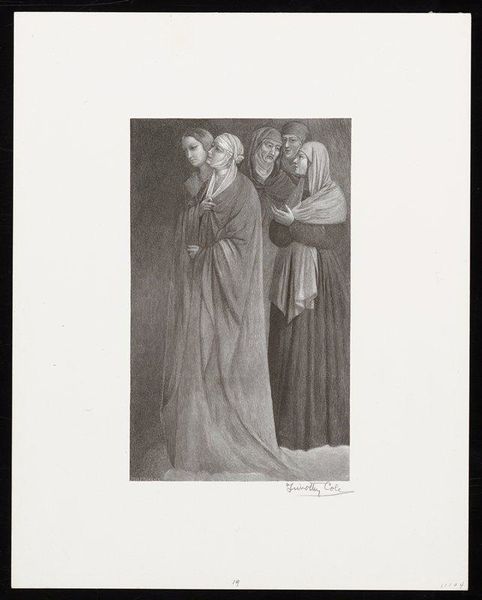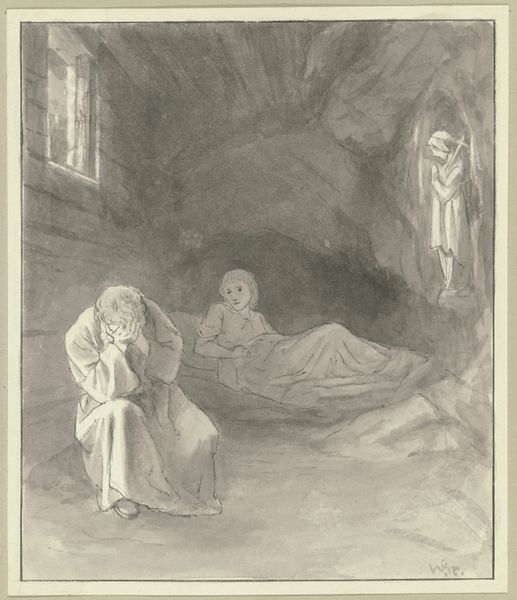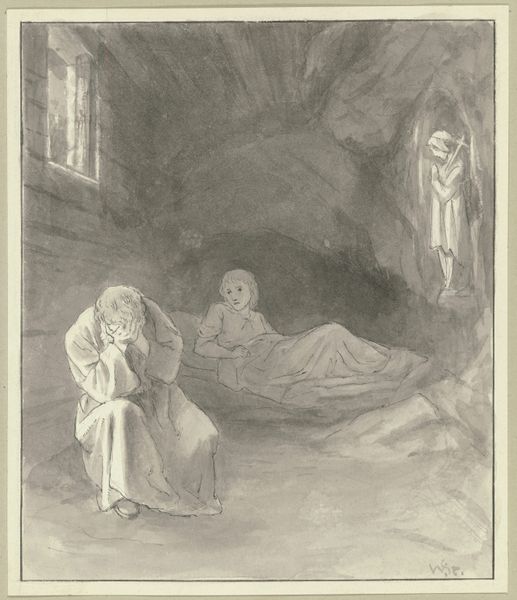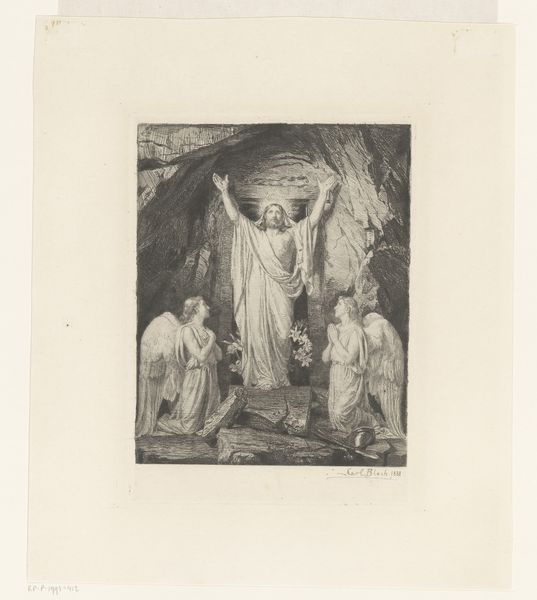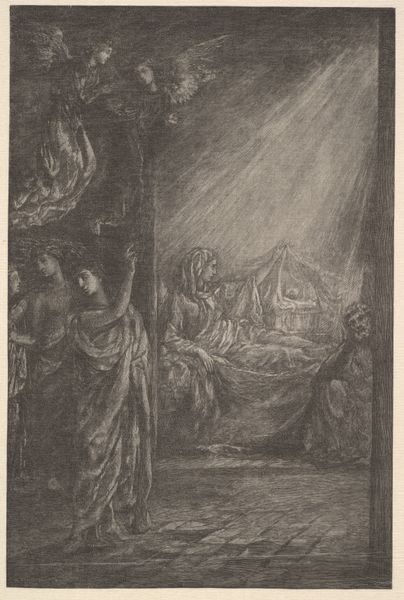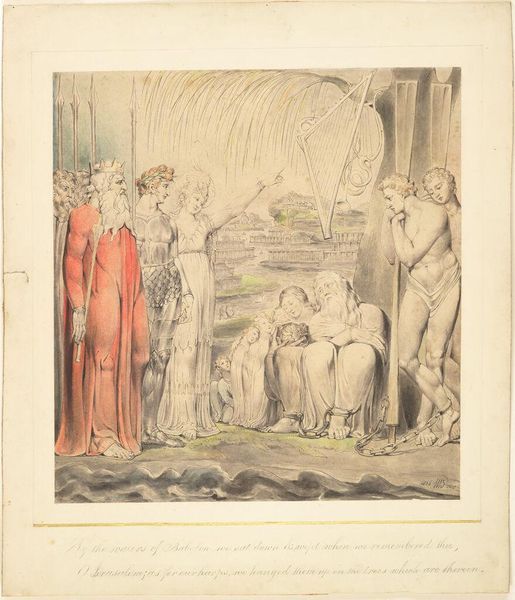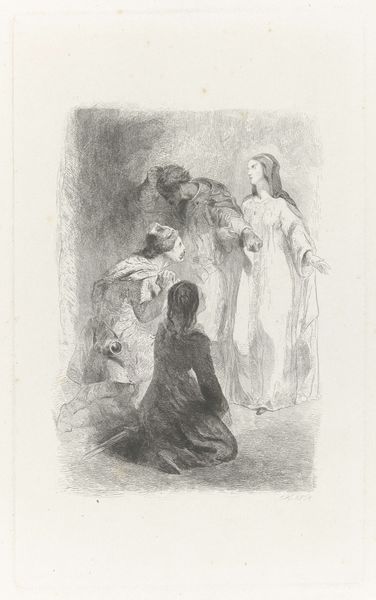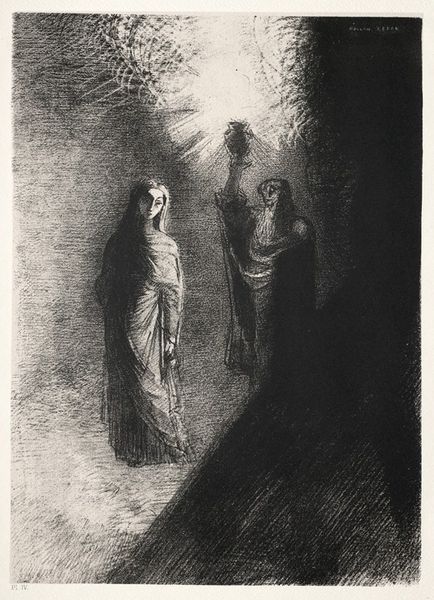
Dimensions: support: 417 x 310 mm
Copyright: CC-BY-NC-ND 4.0 DEED, Photo: Tate
Curator: William Blake's watercolor, "The Entombment," now held at the Tate, presents a powerful image of grief and reverence. Editor: It's striking how Blake uses dark, muted tones to create a somber mood. There's a definite sense of collective mourning, but also a stark stillness. Curator: Indeed. Notice the centrality of the candle flame—a potent symbol of the soul’s enduring light, even in the face of death. It’s a recurring motif for Blake. Editor: And how Blake uses the figures to create a community gathered around loss; their veils are a reminder of how grief obscures and transforms identity. Curator: The composition, with its arched tomb entrance, almost echoes the shape of a halo, suggesting transcendence, a hope for resurrection. Editor: I appreciate how Blake connects personal sorrow with grander themes of sacrifice. The artwork offers a commentary on historical trauma and its cultural memory. Curator: Blake allows us to feel the weight of this moment, yet also hints at the potential for spiritual rebirth. Editor: It’s a powerful testament to art’s ability to connect us to our deepest emotions.
Comments
Join the conversation
Join millions of artists and users on Artera today and experience the ultimate creative platform.
tate 6 months ago
⋮
The white card mount for this drawing was made after Blake’s death; the embossed stamp (top left) reads ‘Turnbull’s Crayon Board’, which was not made before 1846. The mount was probably made for descendants of Blake’s patron Thomas Butts. The watercolour is ‘drum-mounted’, that is, glued along its edges to a ‘window’ cut in the board. The smudges of gold and black paint on the mount suggest the drawing was later framed with verre églomisé: glass painted with black and gold lines on its inner face. This method, invented by the eighteenth-century French framer J-B Glomy, became popular in the mid-nineteenth century. Gallery label, September 2004
